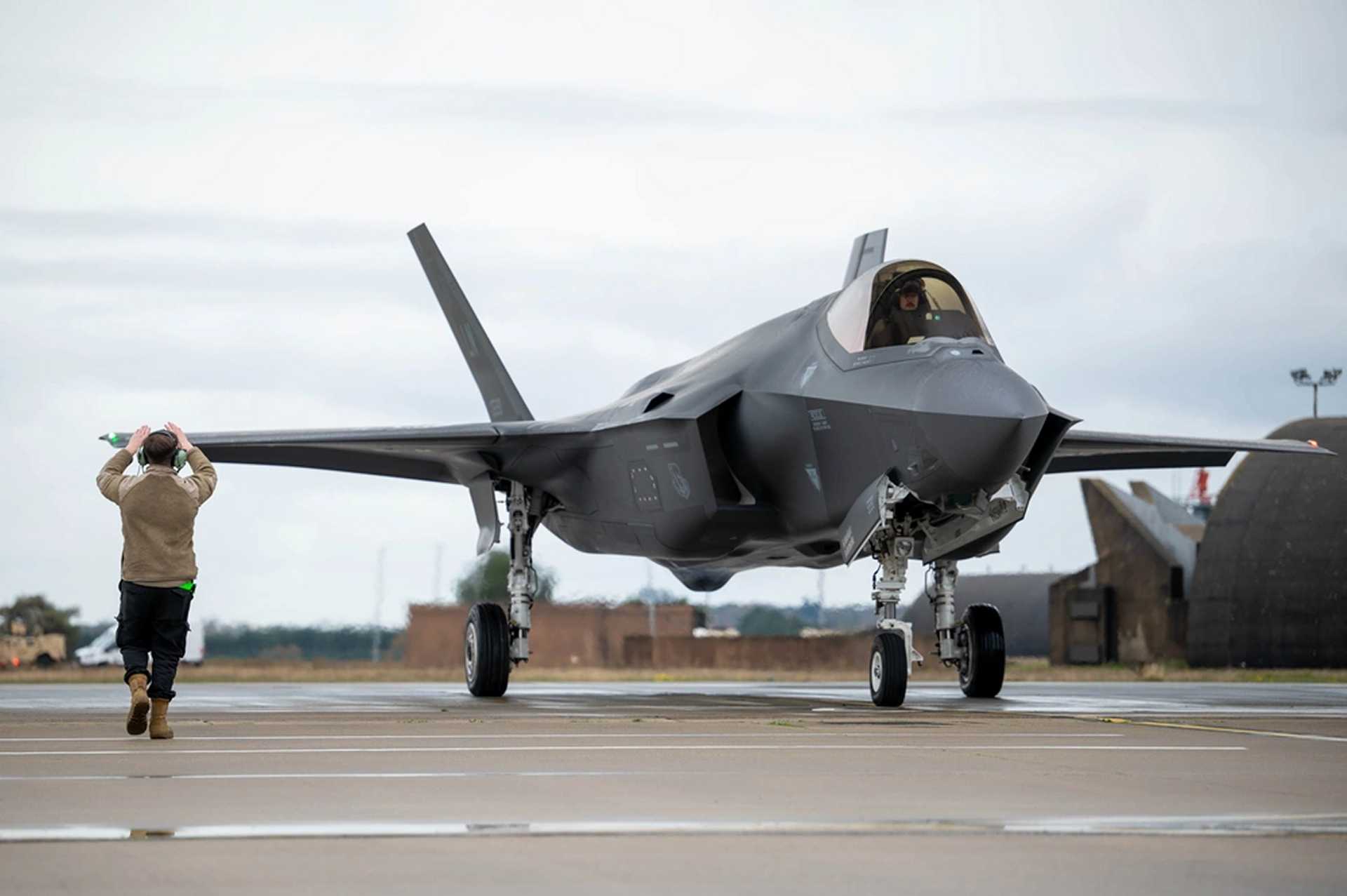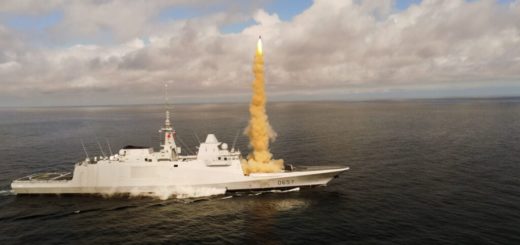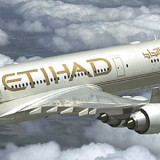Morocco could soon become the first Arab nation to acquire US-made F-35 stealth fighter jets

{loadposition bannertop}
{loadposition sidebarpub}
According to Identité Juive on November 22, 2024, Morocco is reportedly progressing toward becoming the first Arab and African country to acquire F-35 stealth fighter jets from the United States. The U.S. Department of Defense is expected to finalize an agreement for the delivery of 32 F-35 Lightning IIs, at an estimated cost exceeding $17 billion over 45 years, covering both procurement and maintenance. If confirmed, this acquisition would expand the Royal Moroccan Air Force’s inventory, which is currently centered on fourth-generation F-16 aircraft.Follow Army Recognition on Google News at this link
In a hypothetical aerial engagement between Algeria’s Su-57 and Morocco’s F-35 fighter jets, the Su-57’s agility could provide an advantage in close-range combat, while the F-35’s stealth and sensor capabilities may allow it to detect and engage the Su-57 at a greater distance before being detected. (Picture source: US DoD)
To date, Arab African nations show mixed outcomes regarding the acquisition of F-35 fighter jets. Türkiye ordered 30 F-35As, with plans for up to 100, but purchases were halted in 2020 due to U.S. sanctions over Türkiye’s procurement of the Russian S-400 missile system. Four jets were delivered but remain withheld at Luke Air Force Base, and the U.S. stated in February 2024 that Türkiye could be readmitted to the F-35 program if it resolves the S-400 issue. The United Arab Emirates signed a deal in January 2021 for 50 F-35s as part of a $23 billion arms package, but in December 2021, the UAE unilaterally suspended the agreement, citing technical requirements, sovereign operational restrictions, and cost concerns.
A senior UAE official indicated in September 2024 that discussions with the U.S. over the F-35 are not expected to resume. Qatar expressed interest in the F-35 in 2020, but U.S. policy to maintain Israel’s qualitative military edge has prevented progress. Saudi Arabia has shown interest in the F-35 since 2012 but has not advanced toward an agreement, with obstacles including U.S. concerns about regional stability, human rights issues, and Israel’s military edge, leading to the potential acquisition of 100 Turkish KAAN fighters.
Regarding Morocco, negotiations for the deal reportedly took place between 2020 and 2022, with Morocco seeking Israel’s assistance to facilitate discussions with U.S. authorities. A meeting in November 2021 between Israeli Defense Minister Benny Gantz and Moroccan Defense Minister Abdellatif Loudiyi is cited as instrumental in advancing these negotiations. Rising tensions with Algeria—particularly regarding the Western Sahara conflict and Algeria’s support for the Polisario Front—are considered major factors driving Morocco’s interest in these aircraft. Algeria’s acquisition of Russian Su-57 stealth fighters has also reportedly influenced Morocco’s decision.
Algeria is reported to have signed a contract for the acquisition of 14 Su-57 fighter jets from Russia as part of a broader military agreement that includes Su-34 and Su-35 aircraft. The Su-57, designated as a fifth-generation stealth fighter, incorporates features such as reduced radar cross-section, advanced avionics, and enhanced maneuverability. This reported procurement would add to Algeria’s existing fleet of Su-30MKA and Su-35 aircraft, reflecting its effort to modernize its air force. If the agreement is implemented, Algeria could become the first country outside Russia to receive the Su-57. This acquisition aligns with Algeria’s strategy to maintain a regional military balance with Morocco amid ongoing tensions over Western Sahara.
Algeria’s potential acquisition of the Su-57 is considered a significant factor influencing Morocco’s decision to modernize its forces with a comparable or superior fifth-generation stealth fighter, such as the F-35. (Picture source: Russian social media)
Since Morocco annexed the region in 1975, Algeria has supported the Polisario Front, which advocates for Western Sahara’s independence, by providing political backing and hosting Sahrawi refugees. Algeria frames this support as consistent with its regional policies and anti-colonial stance. Morocco claims Western Sahara as part of its territory and has proposed limited autonomy under Moroccan sovereignty. Diplomatic relations between the two countries worsened in August 2021, when Algeria severed ties with Morocco, citing what it called “hostile actions” related to the conflict.
Morocco’s interest in the F-35 is therefore part of a broader effort to strengthen its defense capabilities in collaboration with Western allies, including the United States and Israel. This effort also includes acquisitions such as AH-64E Apache helicopters, M1A2 SEPv3 Abrams tanks, Bradley armored vehicles, and MQ-9B SeaGuardian drones. The F-35 was prominently featured at the 7th Marrakech Air Show, held from October 30 to November 2, 2024, under the High Patronage of King Mohammed VI and with the support of the Royal Moroccan Air Force. The event showcased over 300 exhibitors and hosted 100 international delegations. Morocco also displayed its first Boeing AH-64E Apache helicopter at the event, part of an order for 24 units currently in production.
In a hypothetical aerial engagement between Algeria’s Su-57 and Morocco’s F-35 fighter jets, several factors would determine the outcome. The Su-57 is a fifth-generation stealth aircraft designed by Russia, capable of achieving speeds over Mach 2 and equipped with thrust-vectoring engines for enhanced maneuverability. The F-35, developed by the United States, prioritizes stealth and advanced avionics, with a low radar cross-section and integrated sensor fusion for improved situational awareness. The Su-57’s agility could provide an advantage in close-range combat, while the F-35’s stealth and sensor capabilities may allow it to detect and engage the Su-57 at a greater distance before being detected. This balance suggests that the F-35 could hold an advantage in beyond-visual-range scenarios, depending on the operational context and pilot expertise.
The potential acquisition of Su-57 fighter jets by Algeria and F-35 aircraft by Morocco could shift the military balance in North Africa. Algeria’s interest in the Su-57 appears aimed at countering Morocco’s existing fleet of F-16s and its potential procurement of F-35s, raising the likelihood of a regional arms race. This development might prompt neighboring countries, such as Spain, to reassess their defense strategies, including the possible acquisition of F-35s to maintain strategic balance. The introduction of these advanced aircraft could impact the military equilibrium, increase tensions, and influence diplomatic relations within the region.

{loadposition bannertop}
{loadposition sidebarpub}
According to Identité Juive on November 22, 2024, Morocco is reportedly progressing toward becoming the first Arab and African country to acquire F-35 stealth fighter jets from the United States. The U.S. Department of Defense is expected to finalize an agreement for the delivery of 32 F-35 Lightning IIs, at an estimated cost exceeding $17 billion over 45 years, covering both procurement and maintenance. If confirmed, this acquisition would expand the Royal Moroccan Air Force’s inventory, which is currently centered on fourth-generation F-16 aircraft.
Follow Army Recognition on Google News at this link
In a hypothetical aerial engagement between Algeria’s Su-57 and Morocco’s F-35 fighter jets, the Su-57’s agility could provide an advantage in close-range combat, while the F-35’s stealth and sensor capabilities may allow it to detect and engage the Su-57 at a greater distance before being detected. (Picture source: US DoD)
To date, Arab African nations show mixed outcomes regarding the acquisition of F-35 fighter jets. Türkiye ordered 30 F-35As, with plans for up to 100, but purchases were halted in 2020 due to U.S. sanctions over Türkiye’s procurement of the Russian S-400 missile system. Four jets were delivered but remain withheld at Luke Air Force Base, and the U.S. stated in February 2024 that Türkiye could be readmitted to the F-35 program if it resolves the S-400 issue. The United Arab Emirates signed a deal in January 2021 for 50 F-35s as part of a $23 billion arms package, but in December 2021, the UAE unilaterally suspended the agreement, citing technical requirements, sovereign operational restrictions, and cost concerns.
A senior UAE official indicated in September 2024 that discussions with the U.S. over the F-35 are not expected to resume. Qatar expressed interest in the F-35 in 2020, but U.S. policy to maintain Israel’s qualitative military edge has prevented progress. Saudi Arabia has shown interest in the F-35 since 2012 but has not advanced toward an agreement, with obstacles including U.S. concerns about regional stability, human rights issues, and Israel’s military edge, leading to the potential acquisition of 100 Turkish KAAN fighters.
Regarding Morocco, negotiations for the deal reportedly took place between 2020 and 2022, with Morocco seeking Israel’s assistance to facilitate discussions with U.S. authorities. A meeting in November 2021 between Israeli Defense Minister Benny Gantz and Moroccan Defense Minister Abdellatif Loudiyi is cited as instrumental in advancing these negotiations. Rising tensions with Algeria—particularly regarding the Western Sahara conflict and Algeria’s support for the Polisario Front—are considered major factors driving Morocco’s interest in these aircraft. Algeria’s acquisition of Russian Su-57 stealth fighters has also reportedly influenced Morocco’s decision.
Algeria is reported to have signed a contract for the acquisition of 14 Su-57 fighter jets from Russia as part of a broader military agreement that includes Su-34 and Su-35 aircraft. The Su-57, designated as a fifth-generation stealth fighter, incorporates features such as reduced radar cross-section, advanced avionics, and enhanced maneuverability. This reported procurement would add to Algeria’s existing fleet of Su-30MKA and Su-35 aircraft, reflecting its effort to modernize its air force. If the agreement is implemented, Algeria could become the first country outside Russia to receive the Su-57. This acquisition aligns with Algeria’s strategy to maintain a regional military balance with Morocco amid ongoing tensions over Western Sahara.

Algeria’s potential acquisition of the Su-57 is considered a significant factor influencing Morocco’s decision to modernize its forces with a comparable or superior fifth-generation stealth fighter, such as the F-35. (Picture source: Russian social media)
Since Morocco annexed the region in 1975, Algeria has supported the Polisario Front, which advocates for Western Sahara’s independence, by providing political backing and hosting Sahrawi refugees. Algeria frames this support as consistent with its regional policies and anti-colonial stance. Morocco claims Western Sahara as part of its territory and has proposed limited autonomy under Moroccan sovereignty. Diplomatic relations between the two countries worsened in August 2021, when Algeria severed ties with Morocco, citing what it called “hostile actions” related to the conflict.
Morocco’s interest in the F-35 is therefore part of a broader effort to strengthen its defense capabilities in collaboration with Western allies, including the United States and Israel. This effort also includes acquisitions such as AH-64E Apache helicopters, M1A2 SEPv3 Abrams tanks, Bradley armored vehicles, and MQ-9B SeaGuardian drones. The F-35 was prominently featured at the 7th Marrakech Air Show, held from October 30 to November 2, 2024, under the High Patronage of King Mohammed VI and with the support of the Royal Moroccan Air Force. The event showcased over 300 exhibitors and hosted 100 international delegations. Morocco also displayed its first Boeing AH-64E Apache helicopter at the event, part of an order for 24 units currently in production.
In a hypothetical aerial engagement between Algeria’s Su-57 and Morocco’s F-35 fighter jets, several factors would determine the outcome. The Su-57 is a fifth-generation stealth aircraft designed by Russia, capable of achieving speeds over Mach 2 and equipped with thrust-vectoring engines for enhanced maneuverability. The F-35, developed by the United States, prioritizes stealth and advanced avionics, with a low radar cross-section and integrated sensor fusion for improved situational awareness. The Su-57’s agility could provide an advantage in close-range combat, while the F-35’s stealth and sensor capabilities may allow it to detect and engage the Su-57 at a greater distance before being detected. This balance suggests that the F-35 could hold an advantage in beyond-visual-range scenarios, depending on the operational context and pilot expertise.
The potential acquisition of Su-57 fighter jets by Algeria and F-35 aircraft by Morocco could shift the military balance in North Africa. Algeria’s interest in the Su-57 appears aimed at countering Morocco’s existing fleet of F-16s and its potential procurement of F-35s, raising the likelihood of a regional arms race. This development might prompt neighboring countries, such as Spain, to reassess their defense strategies, including the possible acquisition of F-35s to maintain strategic balance. The introduction of these advanced aircraft could impact the military equilibrium, increase tensions, and influence diplomatic relations within the region.







